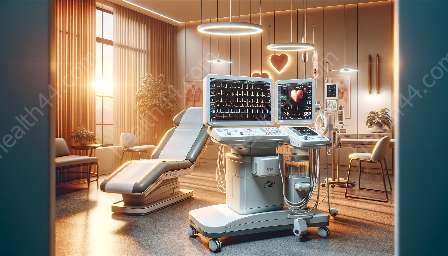Electrocardiography (ECG/EKG) is a crucial tool in modern medicine for diagnosing various heart conditions. However, like any medical device, ECG/EKG machines can encounter technical issues, leading to artifacts in the recorded signals. This guide aims to provide a comprehensive overview of troubleshooting common problems and artifacts associated with ECG/EKG equipment.
Understanding ECG/EKG Artifacts
Before delving into troubleshooting, it's essential to understand what ECG/EKG artifacts are. Artifacts are unwanted signals that can appear on ECG tracings due to various technical and physiological factors. These artifacts can distort the accurate representation of the heart's electrical activity, potentially leading to misinterpretation and incorrect diagnoses.
Common ECG/EKG Artifacts
Common artifacts encountered in ECG/EKG recordings include:
- Muscle Tremor: Involuntary muscle movements, such as shivering or tremors, can create high-frequency noise in ECG tracings.
- Electromagnetic Interference: ECG recordings can be disrupted by electromagnetic interference from nearby electronic devices, power lines, or electrical equipment.
- Patient Motion: Movement by the patient during the recording can introduce baseline shifts and irregular waveforms.
- Poor Electrode Contact: Improper attachment or loose electrodes can result in poor signal quality and noisy tracings.
Troubleshooting ECG/EKG Artifacts
Effective troubleshooting of ECG/EKG artifacts involves identifying the root cause and implementing corrective measures. Here are some best practices for addressing common issues:
Artifact Identification and Elimination
To troubleshoot ECG/EKG artifacts, start by visually inspecting the ECG tracings for any anomalies. Look for irregular waveforms, baseline shifts, and high-frequency noise. Once identified, consider the following steps to eliminate or minimize the artifacts:
- Optimize Electrode Placement: Ensure proper positioning of electrodes and good skin contact to improve signal quality and reduce noise.
- Address Patient Movement: Instruct the patient to remain still during the recording, and consider using restraints if necessary.
- Eliminate Electromagnetic Interference: Move the patient away from potential sources of electromagnetic interference, and ensure that the equipment is properly shielded.
Equipment Calibration and Maintenance
Regular calibration and maintenance of ECG/EKG machines are vital for preventing technical issues and artifacts. Follow these guidelines to maintain the equipment:
- Calibration Checks: Perform routine calibration checks as per the manufacturer's recommendations to ensure accurate signal acquisition and processing.
- Electrode Inspection: Regularly inspect electrodes for wear and tear, and replace them if necessary to maintain good electrode-skin contact.
- Equipment Cleaning: Keep the ECG/EKG machine and accessories clean to prevent signal distortions due to dirt or debris.
Diagnostic Assistance
In some cases, seeking assistance from diagnostic experts or biomedical engineers may be necessary to troubleshoot complex ECG/EKG artifacts. Collaborate with professionals who specialize in medical device troubleshooting to address challenging issues.
Best Practices for Artifact Management
Aside from troubleshooting specific artifacts, adopting best practices can help minimize the occurrence of ECG/EKG issues. Consider the following recommendations:
- Patient Preparation: Properly prepare patients before ECG/EKG recordings by explaining the procedure and minimizing factors that can contribute to artifacts, such as patient movement.
- Quality Assurance Protocols: Implement quality assurance protocols to regularly assess the accuracy and reliability of ECG tracings, ensuring that artifacts are promptly identified and managed.
- Training and Education: Provide comprehensive training to healthcare professionals on the correct usage of ECG/EKG machines and artifact recognition, fostering a proactive approach to troubleshooting.
Conclusion
ECG/EKG troubleshooting and artifact management are essential aspects of maintaining the accuracy and reliability of medical diagnostics. By understanding common issues, implementing effective troubleshooting strategies, and promoting best practices, healthcare facilities can ensure the optimal performance of ECG/EKG machines, ultimately leading to improved patient care and diagnosis.


